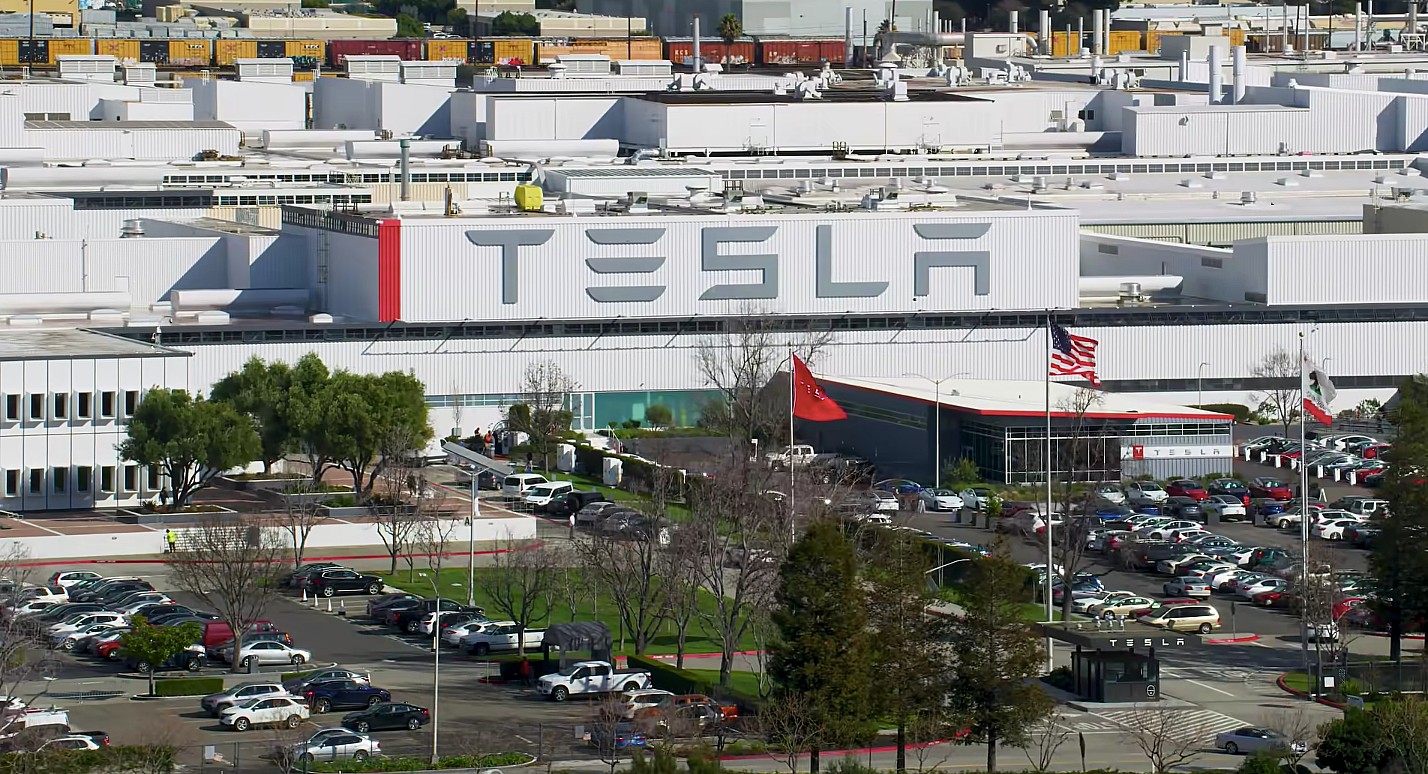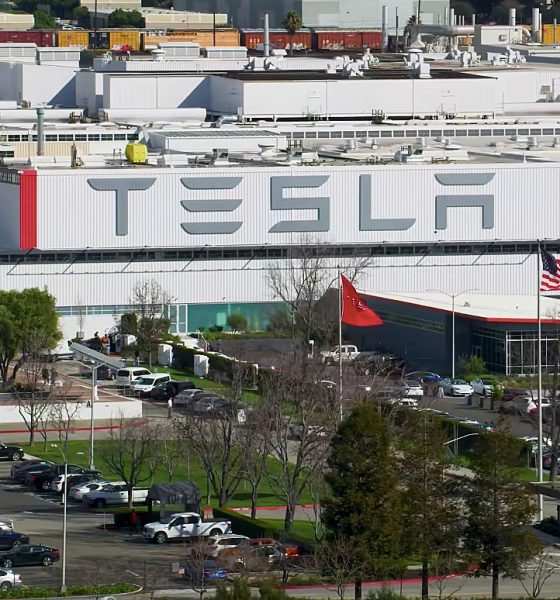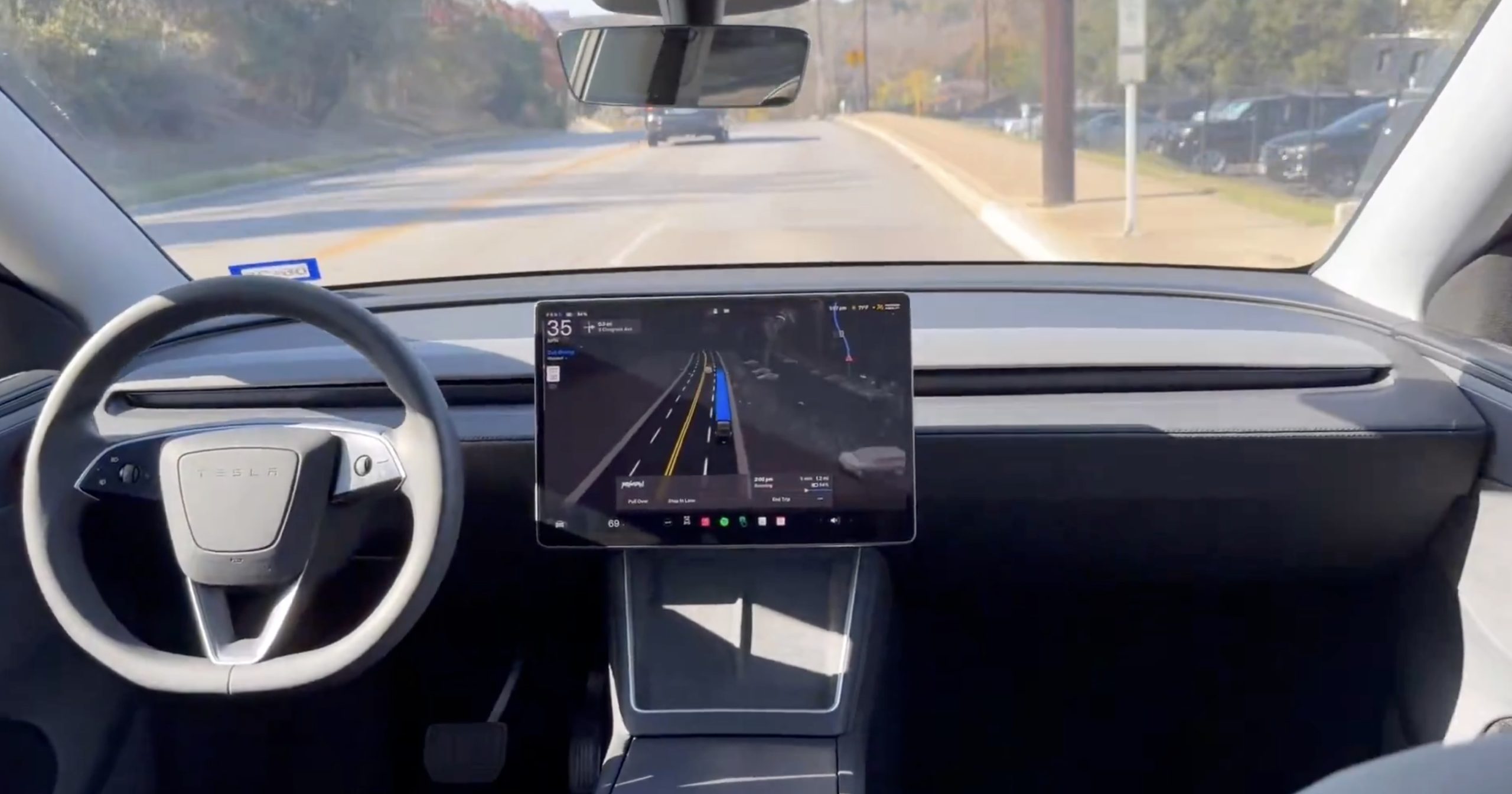

News
Tesla gave Morgan Stanley a tour of its CA factory, and expansion sounds like a no-brainer
Morgan Stanley analysts Adam Jonas detailed a recent tour of Tesla’s Fremont Factory in Northern California, which included test drives of the Model 3, Y, and S Plaid. Based on Jonas’ synopsis of the plant, an expansion of the California plant may be just what the company needs, especially as CEO Elon Musk hinted that building onto the factory may be in the cards for Tesla soon, and it sounds like the most logical solution.
Jonas published a lengthy note to investors on Wednesday, indicating the five main takeaways from Morgan Stanley’s plant dealt with a busy work environment, strong margins, supply chain bottlenecks with raw materials, and Full Self-Driving’s take rate with customers.
However, one of the biggest takeaways from the note was Jonas’ number one point: The Tesla Fremont plant is ‘bustling’ to say the least. Jonas says the plant is operating at a rate of 50 percent above its intended capacity. When Toyota operated the plant prior to Tesla’s takeover, the factory produced 300,000 units per year. However, Tesla is building all four vehicle models at the factory currently. Builds from Fremont remain in North America, unless it is a Model S or Model X vehicle, as this is the only plant that produces Tesla’s flagship models. In Europe, the Model 3 and Model Y are currently produced at Gigafactory Shanghai. However, Gigafactory Berlin is set to begin operation in less than a week, which will provide European customers with Model Y builds initially.
Fremont is operating at a tremendously over-worked rate, which is complicating supply chain management and production at the facility, the note said. “The plant was never designed to produce 450k units (at its peak produced ~300k units before Tesla took it over from Toyota) which was immediately apparent at the tour, ” Jonas wrote. “Tesla does not shy away from the fact the plant is inefficiently designed with 4 assembly buildings, one of which is a tent that cars are assembled in,” in reference to GA 4.5, a sprung structure that Tesla filed to make permanent in 2021.
Additionally, Jonas said that, while the plant has an “exciting buzz,” Fremont is simply running out of space. This “was notable and provides little space for trucks to drop off supplies in locations that make sense inside the plant.”
Combining all of the points Jonas brings up in his note fully supports a recent idea from Musk, who indicated in March Tesla was considering an expansion of the Fremont factory, which is the only operational automotive assembly plant remaining in California. Ford had several in the 1900s, but each has closed.
Tesla is considering a significant expansion of its Fremont Factory
“Actually, we still operate our California factory, which is the largest auto plant in North America, at full capacity and are considering expanding it significantly,” Musk said on March 2. “It has built 2/3 of all electric vehicles in North America, twice as much as all other carmakers combined.”
While Tesla continues to expand manufacturing by opening new plants, its current factories have an opportunity for expansion. Gigafactory Shanghai, which has been operational since early 2020, has already received plans for its first batch of expanded production lines, according to filings Tesla submitted last year. Fremont is an integral part of Tesla’s operation, contributing nearly 500,000 vehicles annually to Tesla’s global operation. A significant expansion may be what the automaker needs to fulfill increased guidance, supplementing Gigafactory Texas as the plant continues to pump out production units ahead of initial deliveries. Tesla will need some time to get Gigafactory Texas up and running to full capacity, in which case Fremont will continue its exemplary output.
Perhaps Gigafactory Texas can repay the favor in a few years, if Tesla ultimately decides to expand Fremont by a significant margin, as Musk indicated.
I’d love to hear from you! If you have any comments, concerns, or questions, please email me at joey@teslarati.com. You can also reach me on Twitter @KlenderJoey, or if you have news tips, you can email us at tips@teslarati.com.

Elon Musk
Elon Musk and Tesla AI Director share insights after empty driver seat Robotaxi rides
The executives’ unoccupied tests hint at the rapid progress of Tesla’s unsupervised Robotaxi efforts.

Tesla CEO Elon Musk and AI Director Ashok Elluswamy celebrated Christmas Eve by sharing personal experiences with Robotaxi vehicles that had no safety monitor or occupant in the driver’s seat. Musk described the system’s “perfect driving” around Austin, while Elluswamy posted video from the back seat, calling it “an amazing experience.”
The executives’ unoccupied tests hint at the rapid progress of Tesla’s unsupervised Robotaxi efforts.
Elon and Ashok’s firsthand Robotaxi insights
Prior to Musk and the Tesla AI Director’s posts, sightings of unmanned Teslas navigating public roads were widely shared on social media. One such vehicle was spotted in Austin, Texas, which Elon Musk acknowleged by stating that “Testing is underway with no occupants in the car.”
Based on his Christmas Eve post, Musk seemed to have tested an unmanned Tesla himself. “A Tesla with no safety monitor in the car and me sitting in the passenger seat took me all around Austin on Sunday with perfect driving,” Musk wrote in his post.
Elluswamy responded with a 2-minute video showing himself in the rear of an unmanned Tesla. The video featured the vehicle’s empty front seats, as well as its smooth handling through real-world traffic. He captioned his video with the words, “It’s an amazing experience!”
Towards Unsupervised operations
During an xAI Hackathon earlier this month, Elon Musk mentioned that Tesla owed be removing Safety Monitors from its Robotaxis in Austin in just three weeks. “Unsupervised is pretty much solved at this point. So there will be Tesla Robotaxis operating in Austin with no one in them. Not even anyone in the passenger seat in about three weeks,” he said. Musk echoed similar estimates at the 2025 Annual Shareholder Meeting and the Q3 2025 earnings call.
Considering the insights that were posted Musk and Elluswamy, it does appear that Tesla is working hard towards operating its Robotaxis with no safety monitors. This is quite impressive considering that the service was launched just earlier this year.
Elon Musk
Starlink passes 9 million active customers just weeks after hitting 8 million
The milestone highlights the accelerating growth of Starlink, which has now been adding over 20,000 new users per day.

SpaceX’s Starlink satellite internet service has continued its rapid global expansion, surpassing 9 million active customers just weeks after crossing the 8 million mark.
The milestone highlights the accelerating growth of Starlink, which has now been adding over 20,000 new users per day.
9 million customers
In a post on X, SpaceX stated that Starlink now serves over 9 million active users across 155 countries, territories, and markets. The company reached 8 million customers in early November, meaning it added roughly 1 million subscribers in under seven weeks, or about 21,275 new users on average per day.
“Starlink is connecting more than 9M active customers with high-speed internet across 155 countries, territories, and many other markets,” Starlink wrote in a post on its official X account. SpaceX President Gwynne Shotwell also celebrated the milestone on X. “A huge thank you to all of our customers and congrats to the Starlink team for such an incredible product,” she wrote.
That growth rate reflects both rising demand for broadband in underserved regions and Starlink’s expanding satellite constellation, which now includes more than 9,000 low-Earth-orbit satellites designed to deliver high-speed, low-latency internet worldwide.
Starlink’s momentum
Starlink’s momentum has been building up. SpaceX reported 4.6 million Starlink customers in December 2024, followed by 7 million by August 2025, and 8 million customers in November. Independent data also suggests Starlink usage is rising sharply, with Cloudflare reporting that global web traffic from Starlink users more than doubled in 2025, as noted in an Insider report.
Starlink’s momentum is increasingly tied to SpaceX’s broader financial outlook. Elon Musk has said the satellite network is “by far” the company’s largest revenue driver, and reports suggest SpaceX may be positioning itself for an initial public offering as soon as next year, with valuations estimated as high as $1.5 trillion. Musk has also suggested in the past that Starlink could have its own IPO in the future.
News
NVIDIA Director of Robotics: Tesla FSD v14 is the first AI to pass the “Physical Turing Test”
After testing FSD v14, Fan stated that his experience with FSD felt magical at first, but it soon started to feel like a routine.

NVIDIA Director of Robotics Jim Fan has praised Tesla’s Full Self-Driving (Supervised) v14 as the first AI to pass what he described as a “Physical Turing Test.”
After testing FSD v14, Fan stated that his experience with FSD felt magical at first, but it soon started to feel like a routine. And just like smartphones today, removing it now would “actively hurt.”
Jim Fan’s hands-on FSD v14 impressions
Fan, a leading researcher in embodied AI who is currently solving Physical AI at NVIDIA and spearheading the company’s Project GR00T initiative, noted that he actually was late to the Tesla game. He was, however, one of the first to try out FSD v14.
“I was very late to own a Tesla but among the earliest to try out FSD v14. It’s perhaps the first time I experience an AI that passes the Physical Turing Test: after a long day at work, you press a button, lay back, and couldn’t tell if a neural net or a human drove you home,” Fan wrote in a post on X.
Fan added: “Despite knowing exactly how robot learning works, I still find it magical watching the steering wheel turn by itself. First it feels surreal, next it becomes routine. Then, like the smartphone, taking it away actively hurts. This is how humanity gets rewired and glued to god-like technologies.”
The Physical Turing Test
The original Turing Test was conceived by Alan Turing in 1950, and it was aimed at determining if a machine could exhibit behavior that is equivalent to or indistinguishable from a human. By focusing on text-based conversations, the original Turing Test set a high bar for natural language processing and machine learning.
This test has been passed by today’s large language models. However, the capability to converse in a humanlike manner is a completely different challenge from performing real-world problem-solving or physical interactions. Thus, Fan introduced the Physical Turing Test, which challenges AI systems to demonstrate intelligence through physical actions.
Based on Fan’s comments, Tesla has demonstrated these intelligent physical actions with FSD v14. Elon Musk agreed with the NVIDIA executive, stating in a post on X that with FSD v14, “you can sense the sentience maturing.” Musk also praised Tesla AI, calling it the best “real-world AI” today.








